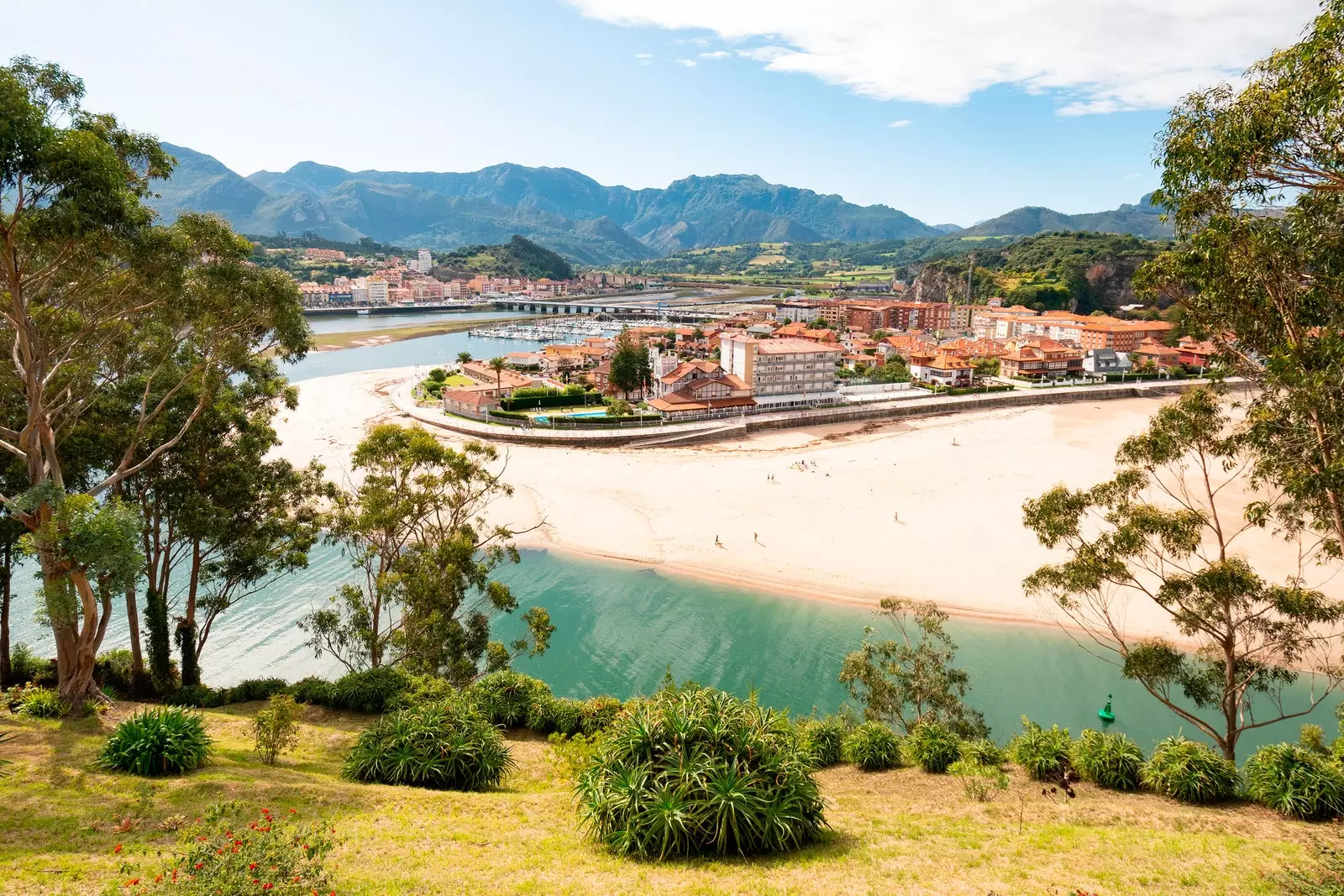
Ribadesella, or the perfect fishing village of Asturias
I am not usually very categorical when describing a place, but in this case I have to admit: Ribadesella is the perfect Asturian fishing village. For me, it has it all: sea, river and mountains. What more could you ask for? Well, we're in luck, because it also boasts a Spectacular gastronomy where local produce is king and marvelous architecture (let's go to Bingo) that will leave you with your mouth open and the desire to return to the past to occupy any of the mansions and mansions that dot its coastline.
TO DO
It is not necessary for me to explain here that Ribadesella alone invites you to walk along its popular Paseo de la Grúa, at the eastern end of the estuary, leaving behind the rula fish market built in 1933 by Manuel García Rodríguez and included in the registry of the Docomomo Ibérico international foundation, whose objective is to disseminate and protect the architectural heritage of the Modern Movement.
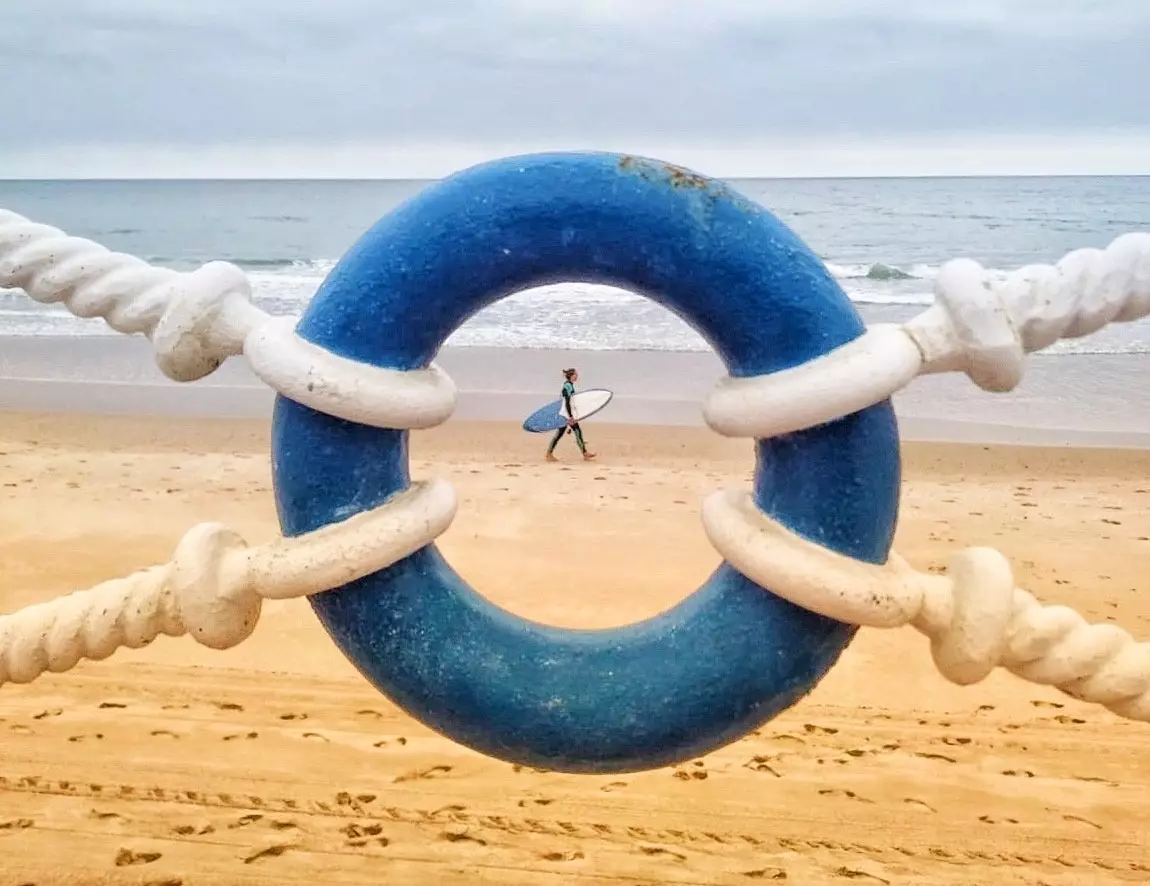
Surfer on the beach of Santa Marina, Ribadesella.
However, the city council saw fit to create in 2007 the Historical Route of the Port of Ribadesella for the most clueless and curious, as it includes six large ceramic murals that condense the history of the council designed by graphic humorist Antonio Mingote with a script by local writer Toni Silva.
Thus the visitor can 'walk' through the Roman past (Imperial Rome colonized the area in the 1st century BC), whaling (from the High Middle Ages to the 17th century) and emigrant (since the middle of the 19th century, the Brigantine Habana used to follow the Ribadesella-Havana route until the arrival of steam) from the town to the present day.
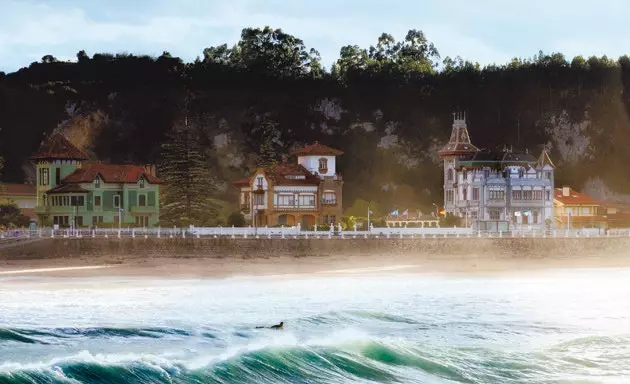
Indian houses on the beach of Santa Marina, Ribadesella.
The Prehistory panel is one of my favorites as it shows the biting humor of Mingote, who illustrates a precursor to canoeing sailing on a log down the Sella while an artist decorates the Tito Bustillo cave with totem animals of the Magdalenian culture (hunter-gatherers) while a prehistoric 'critic' observes and analyzes the result sitting down without doing anything other than giving his opinion.
For those who do not know, the Cueva de Tito Bustillo is one of the 17 caves included by the World Heritage Committee under the name The Altamira cave and the paleolithic cave art of northern Spain for being a reflection of the first artistic expressions during the Upper Paleolithic. For its part, the nearby Cuevona de Ardines is an immense geological dome where visits-workshops are sometimes held, such as the one where they instruct you on how our ancestors made fire.
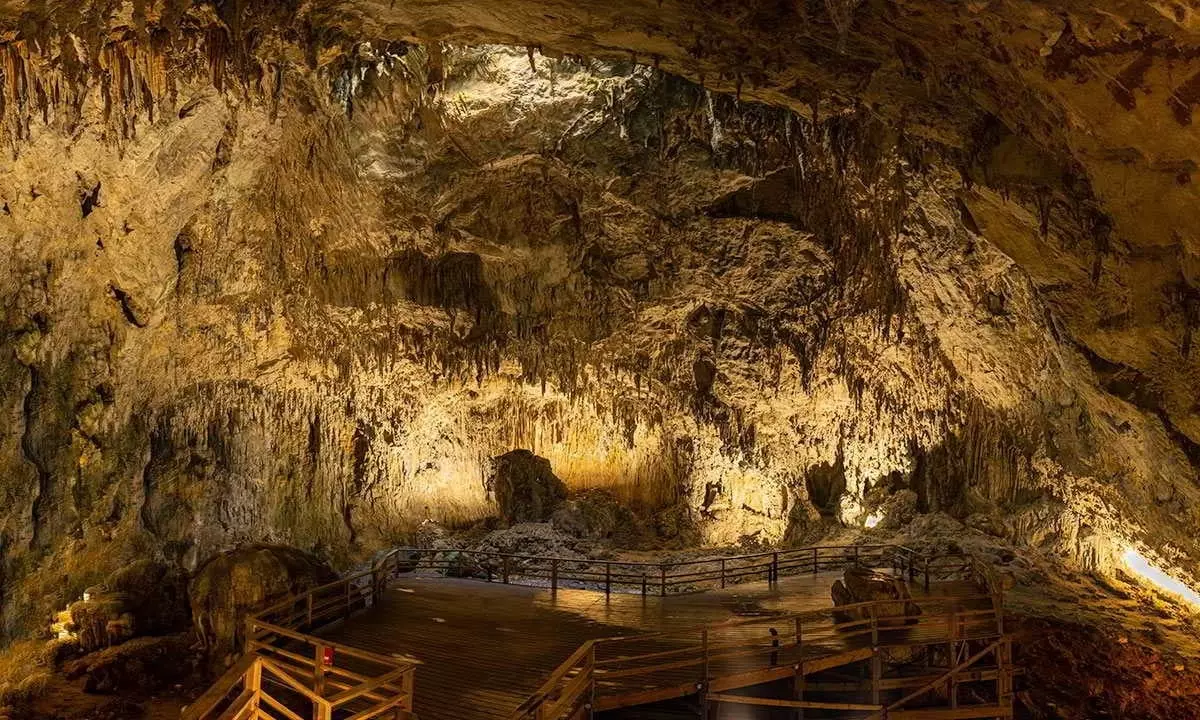
Cuevona de Ardines, whose 'dome' reaches 40 meters in height.
On the other hand, it does not need an explanation. famous descent of the Sella or Les Piragües, in Asturian, since it is one of the best-known festivals in Asturias and has been declared of International Tourist Interest.
It is celebrated on the first Saturday of August and There are two versions of Las Piraguas: the sports (the canoe and canoe competition that takes place between Arriondas and Ribadesella) and the popular one, in which there is music and bars in the street and a parade where the selleros (some arrived by train from Oviedo) wear a picona hat and the traditional vest imposed as an official uniform.
The tour, which lasts about four hours for non-professionals, can actually be done during the rest of the year by registering with any of the leisure and free time activity companies in the area (Canoas Ribadesella, TurAventura, etc.). One last tip, do not get too distracted before reaching Fríes pouring cider when you stop to rest in its beach bars or you will have to call to be picked up halfway, in Toraño. By the way, there are companies like Montañas del Norte that have added another four kilometers to the route so that you can get directly to the Ribadesella bridge.
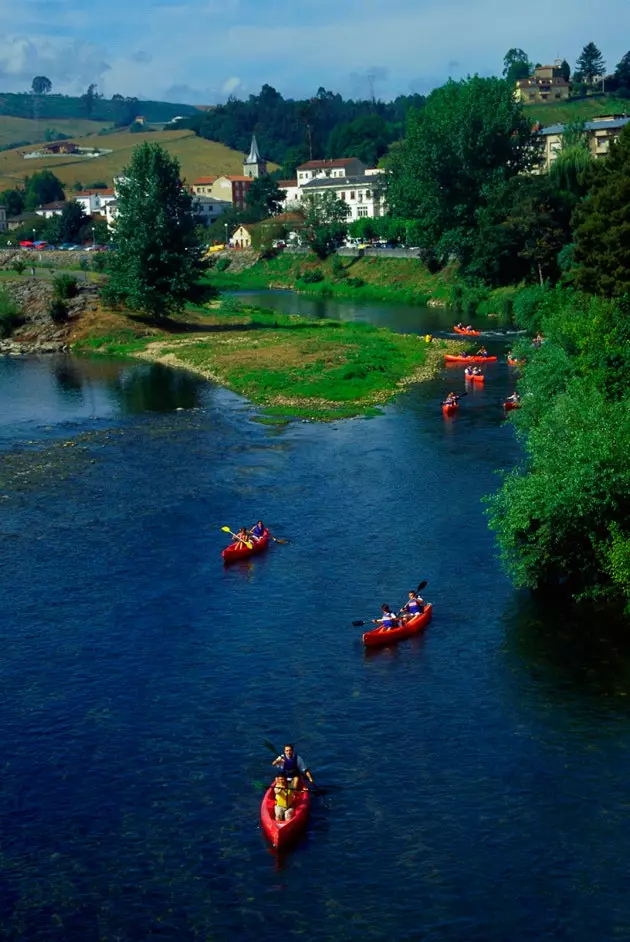
The mythical Descent of the Sella
THE ARTISTIC HISTORICAL HELMET
Pedestrian and medieval court, the restored historic center of Ribadesella obtained the title of "artistic history" for containing several buildings of notable architecture that range from the 16th to the 19th century: the Palace of Prieto-Cutre (in Plaza de la Reina María Cristina) in advanced Plateresque style; the Casa de los Ardines (on Calle López Muñiz), on whose façade the fleurs-de-lys contrast with the heads of Moors with their throats cut; the Casa de Collado (on Calle Fernández Juncos), presided over by an outstanding coat of arms, and its parish church, with paintings by the brothers Bernardo, Antonio and Tino Uría Aza.
Next to the latter, as well as mainly along Gran Vía or Calle Comercio, its weekly market on Wednesdays, as old as the town itself (13th century) and in which the producers of the region sell their fruits and vegetables, as well as beans, cheeses, flours and other products; there are also clothing and antique stalls.
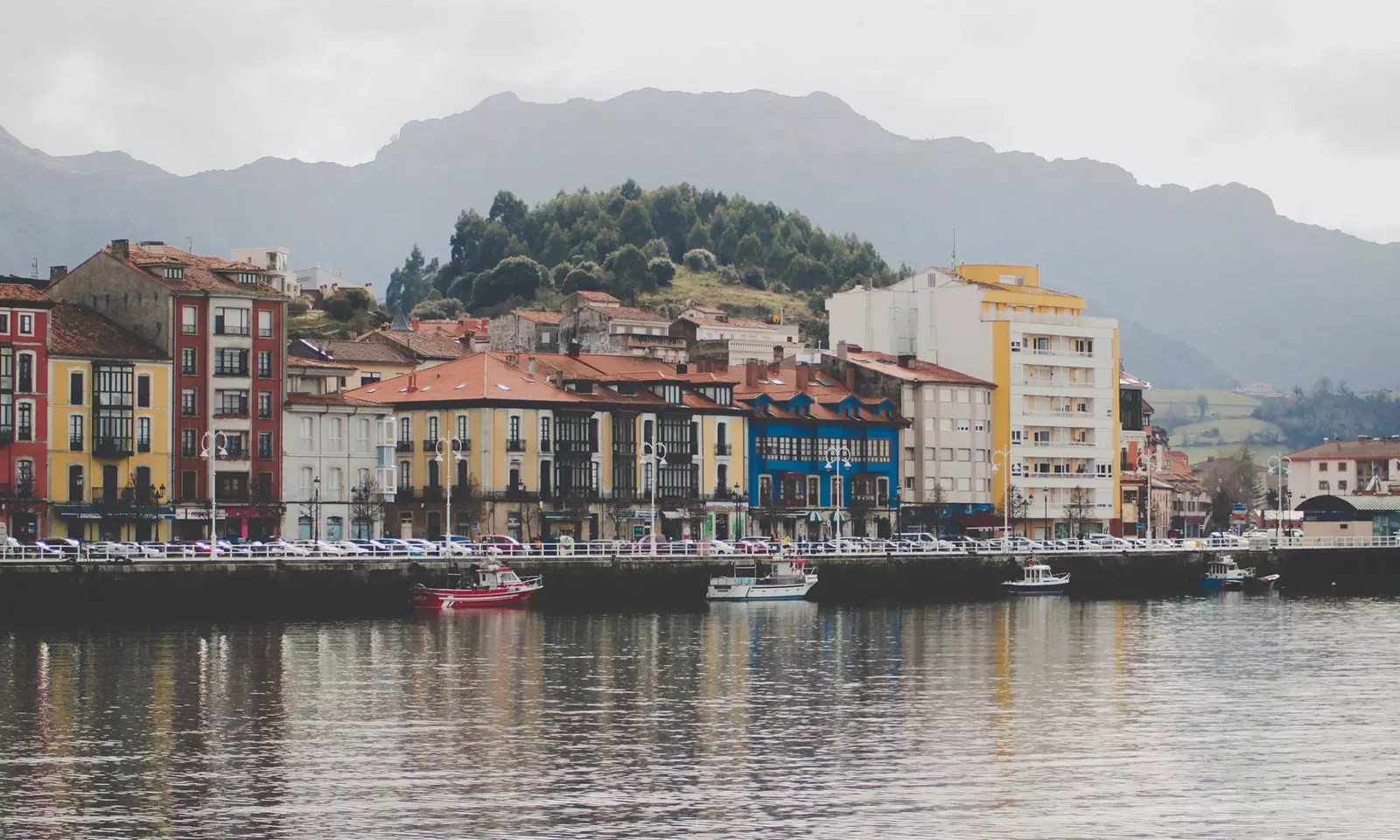
Ribadesella port area at the foot of the estuary.
BEACHES
Santa Marina beach, in Ribadesella, is from another world, a post-nineteenth-century one in which the mansions and mansions embraced the sea and the aristocrats discovered the pleasure of spending the summer in the Bay of Biscay. Where else on the peninsula could you be bathing in the sea, iodine and algae protected by high peaks that also served as an idyllic backdrop? Are the Escarpa and Suave mountain ranges and the Mofrechu mountain (the highest point in the municipality of Ribadesella) the natural enclaves that surround this sandbank of a kilometer and a half in length in which you will see daily surfers practicing both in the waves and on the sand (This is how surf schools do it with novices).
Precisely it is in its aristocratic air where its greatest attraction lies, further fueled by contemporary events that are also ‘real’: the promenade is named after Princesa Letizia in honor of the queen of Spain, who at the time of her declared feeling "Riosellana at heart", since her paternal grandmother, Menchu Álvarez del Valle, resides in Sardéu, which made the Asturian pass and walk for many summers of her childhood here .
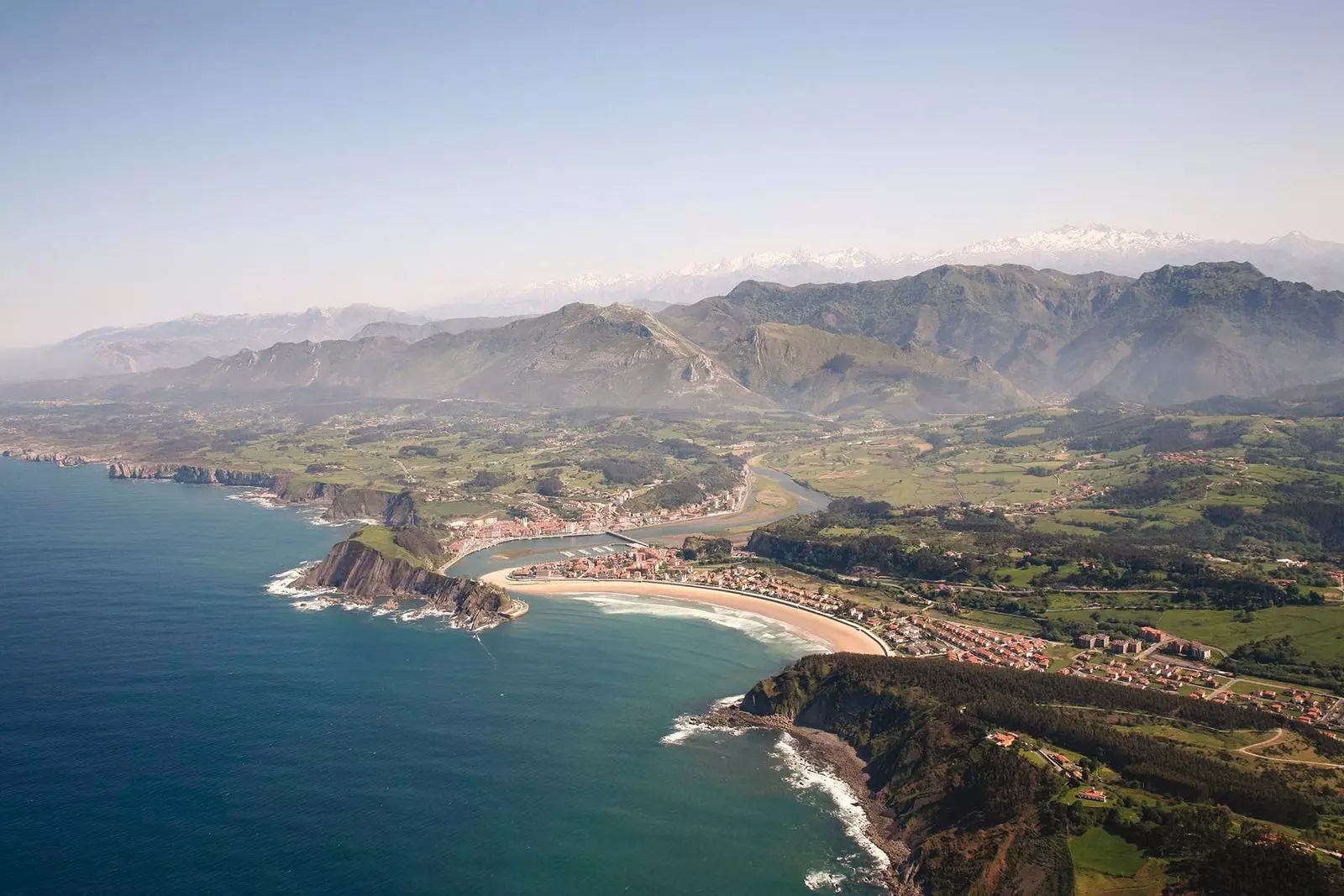
Ribadesella is framed between the sea and the Picos de Europa.
It is obligatory to visit this old garden city promoted by the Marquises of Argüelles – who converted it in 1910 into an exclusive beach resort – from one end to the other, from east to west or, what is the same, from Punta del Arenal which, next to the breakwater on which the hermitage of the Virgen de Guía stands, almost closes off the entrance to the estuary to the Punta'l Pozu viewpoint.
I know that from this Asturian pulpit the views will invite you not to take your eyes off the pounding of the waves on the cliff, but if you are not afraid (and the tide is low) I recommend you go down the metal ladder that gives access to the pedral to see the footprints or fossilized footprints of dinosaurs 'imprinted' in the rock. This is one of the nine sites located on the so-called Asturian Dinosaur Coast, the coastline between Gijón and Ribadesella in which different traces of the Jurassic Period follow one another of these huge terrestrial reptiles (on the beach of La Griega in Colunga one of the largest footprints in the world of a large sauropod dinosaur is preserved).
Less known, but much frequented by the locals, is the small Atalaya beach, a rocky cove on the other side of Mount Corbero (or La Atalaya, hence its name) which is accessed on foot directly from the town of Ribadesella and is surrounded by unique pools and natural pools.
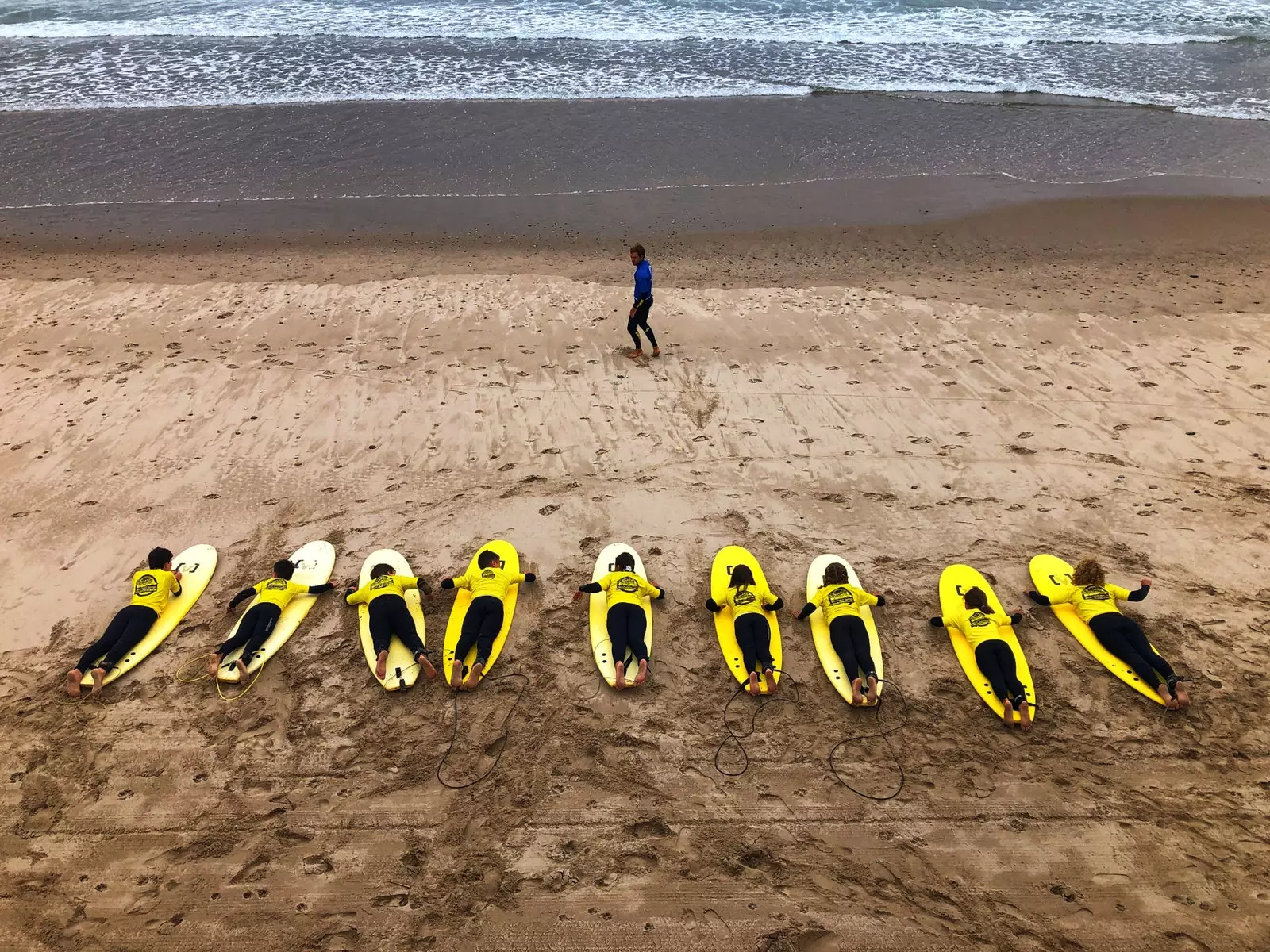
Children learning to surf on the beach of Santa Marina, Ribadesella.
A little further you will have to go to take a bath in the immense and wild Vega beach, declared a Natural Monument next to the nearby Entrepeñas gorge, crowned by large rock needles. In it stands out his peculiar dune system located to the left of the Acebo stream, where the waves do not reach, and its clay cliff, also with remains from the Jurassic period, when “Vega was an immense jungle of swamps that formed part of an infinite delta that reached Castilla itself”, as Ribadesella Tourism reminds us.
Another giant animal is the one that lovers of good cuisine come here to look for, since the facade of Gueyu Mar, one of the best grilled fish restaurants in our country, It is adorned with a huge bright red king fish to remind us who is the king of this house where you can also order sea bream, sea bass or any other fresh shellfish from the Bay of Biscay.
WHERE TO SLEEP AND EAT
There is no time that we will Villa Rosario, an Indian gem that stands out for its architecture on the Princesa Letizia promenade, that the green, red and orange scales of its roof do not leave us 'vitrified' with its beauty. They are there to remind us, like the rest of the original elements of this mansion from the beginning of the last century, of the town's historical relationship with Las Américas, but also how **privileged we are to be able to sleep in one of its few rooms . **
Because although the hotel has another functional building of new construction on the second line of the beach, we, the enjoyers, are more of being on the first line of everything, of opening the garden gate and practically stepping on the sand of Santa Marina, of sitting in the cool next to the hydrangeas that blend with the blue of its excessive facade or of wake up to the roar of the Bay of Biscay across from our balcony.
We also have a fine palate, which is why we love the new gastronomic proposal that the Asturian sommelier Marcos Granda has orchestrated in his Ayalga restaurant. Asturian haute cuisine in which to start with a corn cake with chorizo in cider and an emberzao and finish with a baby squid in its own stew or a pigeon cooked twice with mole. These are just some of the suggestive dishes that we will find in its two tasting menus –Experiencia Ayala and Sabores de la Tierrina– that We recommend, without a doubt, pairing with the wines proposed in the room.
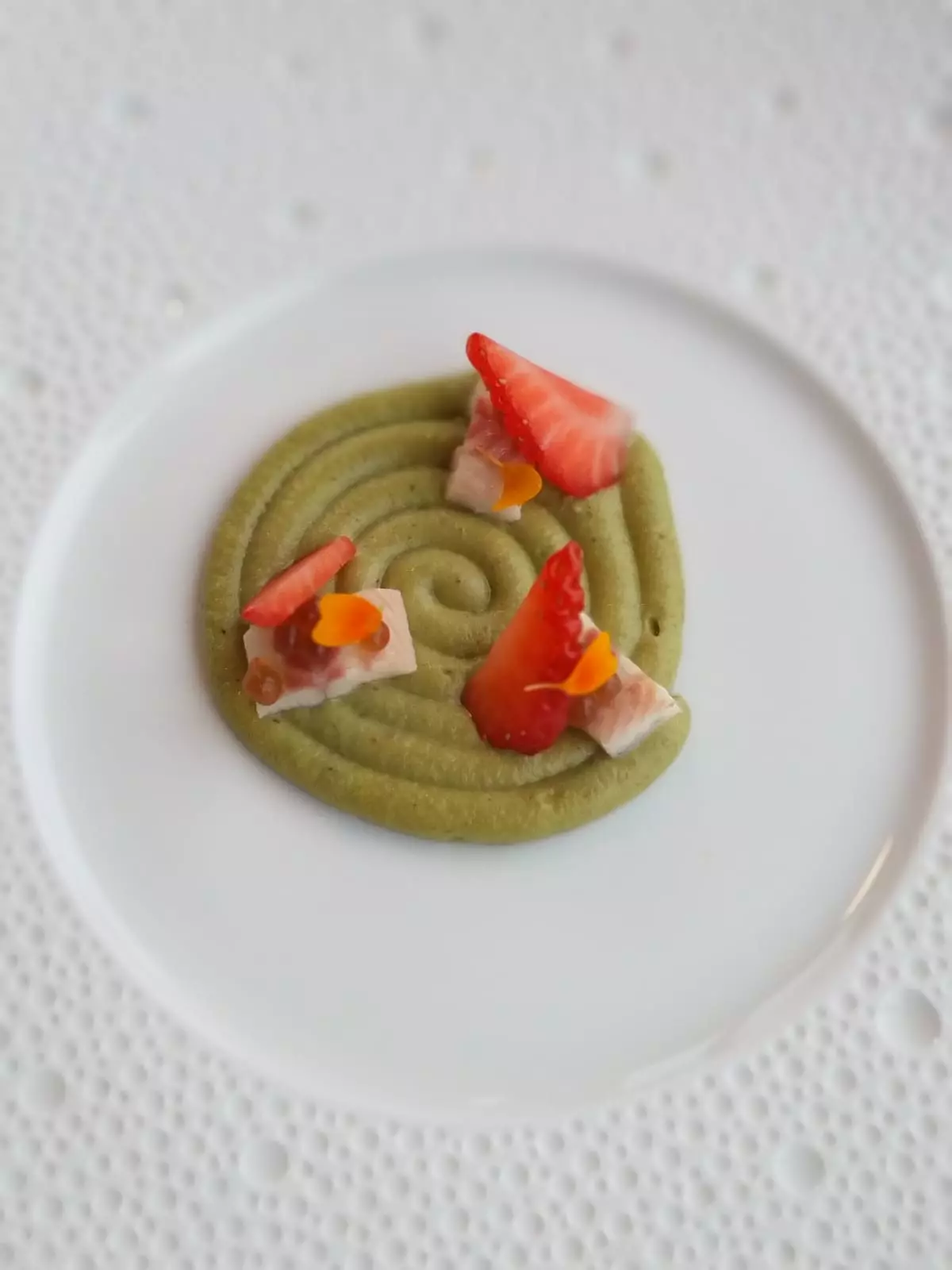
Pistachio cream, smoked eel, strawberries and cider vinegar, at the Ayalga de Ribadesella restaurant.
Another Asturian pro (although in this case adopted) recently settled in Ribadesella is Edén Jiménez, owner of the Secreto a Voces restaurant in Oviedo. The restaurateur has just taken over the gastronomic management of Las Terrazas de Sardalla, the new restaurant at La Piconera Hotel & Spa, and has devised a menu of market cuisine adapted to new gastronomic trends, not so common in the Principality. What he does not take away so that together with the Peruvian ceviche of sea bass and octopus we find a stew of verdinas with clams and spider crab quenelle.
Space, under a glass pergola, it is really cozy, with a colonial look relaxed in which vegetable lamps (both in material and in form) coexist with the characteristic origami paper cranes of the Oviedo place, which now also fly over the head of the diner in Ribadesella.
Its outdoor terrace is the perfect place to end the evening with a cocktail in hand and, if you're lucky, with live music, since it has a musical program. From your pleasant viewpoint you can see in the distance the Palacio de la Piconera that gives its name to the hotel and imagine the Indiano Manuel Martínez returning from Venezuela at the end of the 19th century with the intention of turning this possession into a fruitful agricultural and livestock farm.
Today, its old square is the place that welcomes the spacious and equipped rooms; also its spa, with a water circuit, sauna and treatments of all kinds, from a cranio-facial massage to a ritual with essential oils of grapefruit, pepper and ginger from the Decléor firm.
Because, as I recognized at the beginning of the report, Ribadesella has it all.
SUBSCRIBE HERE to our newsletter and receive all the news from Condé Nast Traveler #YoSoyTraveler
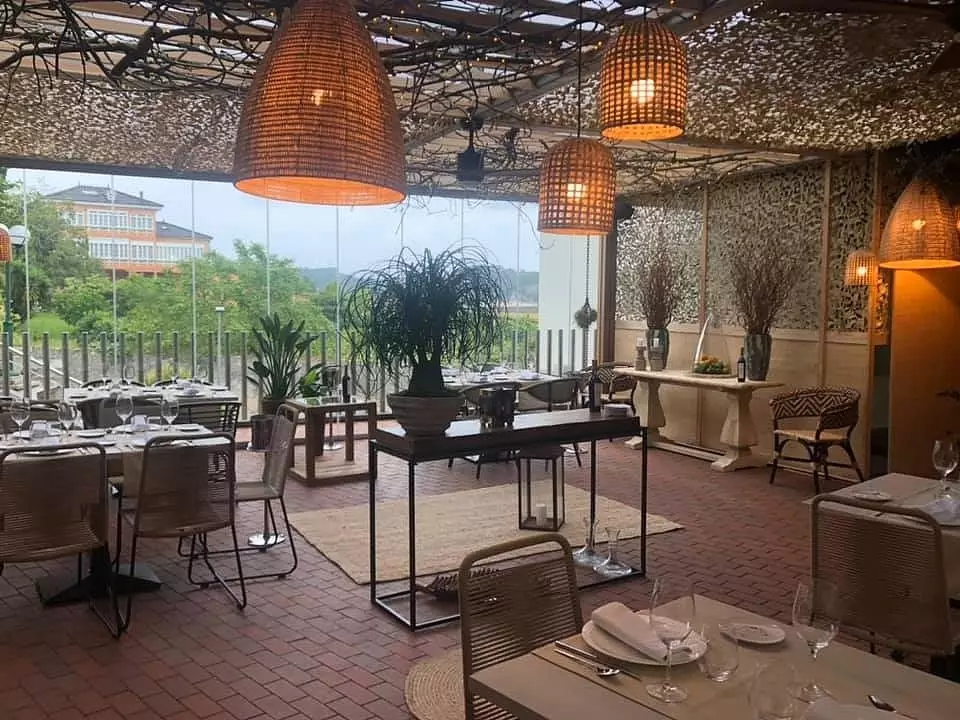
The Terraces of Sardalla with the Palacio de la Piconera in the background. Ribadesella.
